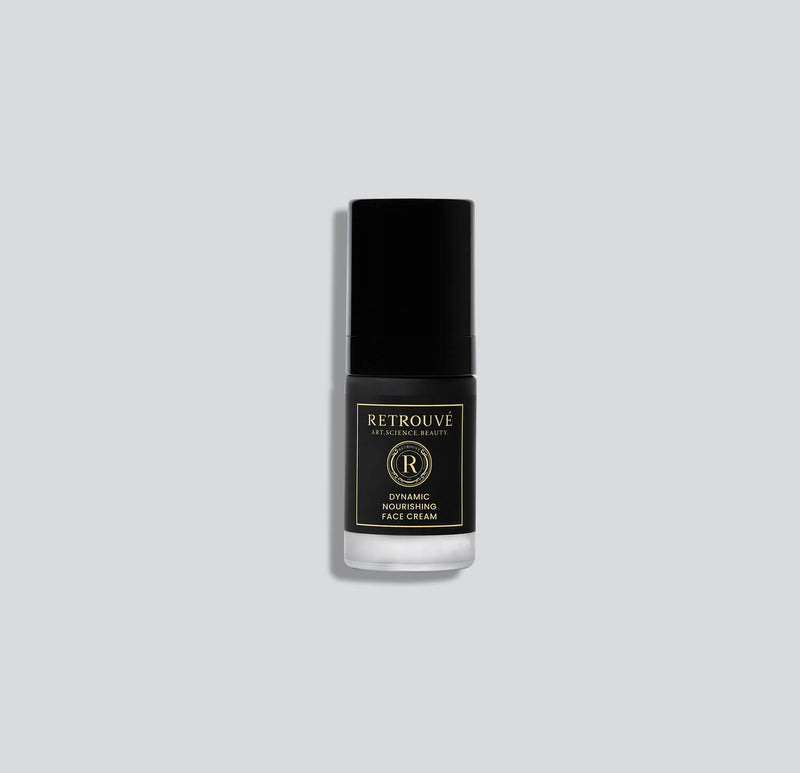Greetings, Retrouvé community! My name is A-lan Holt; I’m an artist, mother, and director of Stanford’s Institute for Diversity in the Arts. A couple of weeks ago with the help of the Lyric McHenry Community Arts Fellowship, we launched a new racial justice conversation series on Retrouvé’s Instagram Live called, “Every Skin Has a Story: Women of Color Take on Beauty,” where we speak with women leading the charge for inclusion and change across the beauty and fashion industry. Join us for our next two challenging and exciting conversations this Friday, August 7 and Friday, August 21 at 12pm PST (3pm EST) on Instagram Live at @officialretrouve.
This week on Art Science Beauty, I want to talk about digging where you stand, a term I often use when describing how a person, community, or company might take their first steps toward getting involved with work for racial justice. When we think about change, we often think about its happening on a large scale in places like politics or policy, or through at-scale grassroots efforts like marches and protests. While these are certainly tangible forms of working toward change, when I am supporting individuals and companies, I like to remind them that change happens quickest and most effectively locally at the level of culture. Policy and protests are something that a few of us participate in some of the time, whereas culture is something that most of us participate in all of the time. So, how do we work with culture to create change?
Following are five ways you can dig where you stand to advance racial justice:
Assess your environment.
As a white person, digging where you stand begins with looking around at the spaces you occupy and participate in. Is your neighborhood mostly white? Does your school district serve mostly white children? What about your workplace? Are there Black people around you; and, if so, what are their experiences? Do they occupy the same work opportunities as you? Are they one black face in an otherwise all-white space? Take some time each week to reflect on the culture of whiteness. Our guest this week, Peyton Dix, recommends Check Your Privilege, a guided journey that deepens your awareness of how everyday actions affect the mental health of Black, Brown, Indigenous, People of Color.
Use your power toward inclusivity.
Knowing that we live and operate in very segregated environments, it’s important to use your voice and position of power to advance diversity. Often, the first step is simply asking questions. For example, “I think it’s important for us to open our school district to communities outside our area. Are there programs in place that help support diversity in this way?” Or, “I’m interested in the racial demographics of our staff, leadership and board. I think with more diverse voices in the room, we could really move the needle even further.” The “Beverly Johnson Rule” is a pledge that Retrouvé has committed to officially and publicly, which requires at least two black professionals to be meaningfully interviewed for influential positions across industries. Advocating for these types of diversity initiatives signals an important and necessary cultural shift against segregation and supremacy and toward inclusivity. It’s important to note that diversity must also come with equity, which we’ll go into next.
Choose equity as a guiding principle.
One of my mentors, cultural critic Jeff Chang, says that diversity without equity is a lie waiting to be exposed. Which is to say, it’s not enough to invite people of color to be the public face of your brand or highlight students of color in your school recruitment brochures. It’s about the experience of people of color within the organization or community circle. How are they being celebrated, paid, promoted, given voice and power? It’s important when supporting diversity efforts to identify and work toward eliminating barriers that prevent the full participation of some groups. Often this effort means recruiting leaders and managers of color, not just entry level or contracted positions; and includes standing up for and advocating on behalf of new hires of color.
Choose diverse environments.
Culture is our way of understanding what is expected of us and what is celebrated about who we are together. One of the problems, of course, is that we have been expected to self-segregate, thereby making the idea of togetherness very homogeneous. How can we affirm, for example, that Black Lives Matter if we actually rarely interact intimately and as equals with communities outside our own race? Trae Bodge, our guest from episode one, spoke beautifully about choosing to raise her multi-racial family in a purposefully diverse community. If done mindfully, she says, this can be incredibly rewarding for families wanting to raise anti-racist children. I want to be careful here to note that this suggestion does not mean moving into a more affordable community of color (hint: gentrification), but instead finding an area and school system that shares your values and that promotes well-being for all people, not just some. Check out this list of 2020’s most diverse places to live.
Support Artists and Community-Based Organizations.
We know that culture creates change, and artists are the leaders of culture. Invest financially in community-based arts organizations, individual artists of color, and/or organizations that support diverse artists and arts leadership. Blackstar Film Festival, The Laundromat Project, The Lyric McHenry Community Arts Fellowship, and The Center for Cultural Power are a few of my favorites. Artists have an incredible ability to envision new worlds – it’s time to invest in those visions!
We look forward to your joining our upcoming Instagram Live conversations, and we would love for you to engage in the conversation as well. Thank you for being part of our community, and we hope this series inspires the change we all need and want to see.
To learn more about the Lyric McHenry Community Arts Fellowship and ways that you can contribute, please visit lyricmchenry.com.
Thanks!
You’ll receive an email when it’s back.
featured products
related
Every Skin Has a Story
“Every Skin Has a Story: Women of Color Take on Beauty”
Read
Every Skin Has a Story
Every CRWN has a Story: The Politics and Poetics of Natural Hair
No matter what culture we’re from, hair is an essential part of what makes us who we are.
ReadEvery Skin Has a Story
Get to Know Our IG LIVE Guest: Raisa Flowers
Whether behind the scenes as a makeup artist or in front of the lens as model, Raisa Flowers never ceases to convey her distinct point-of-view.
Read







